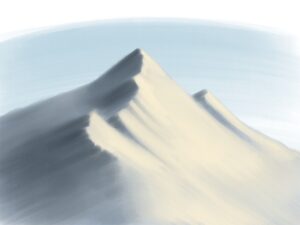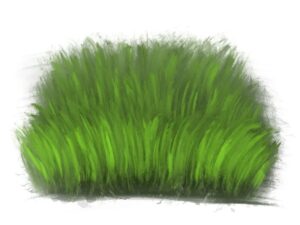How to Paint an Arrow
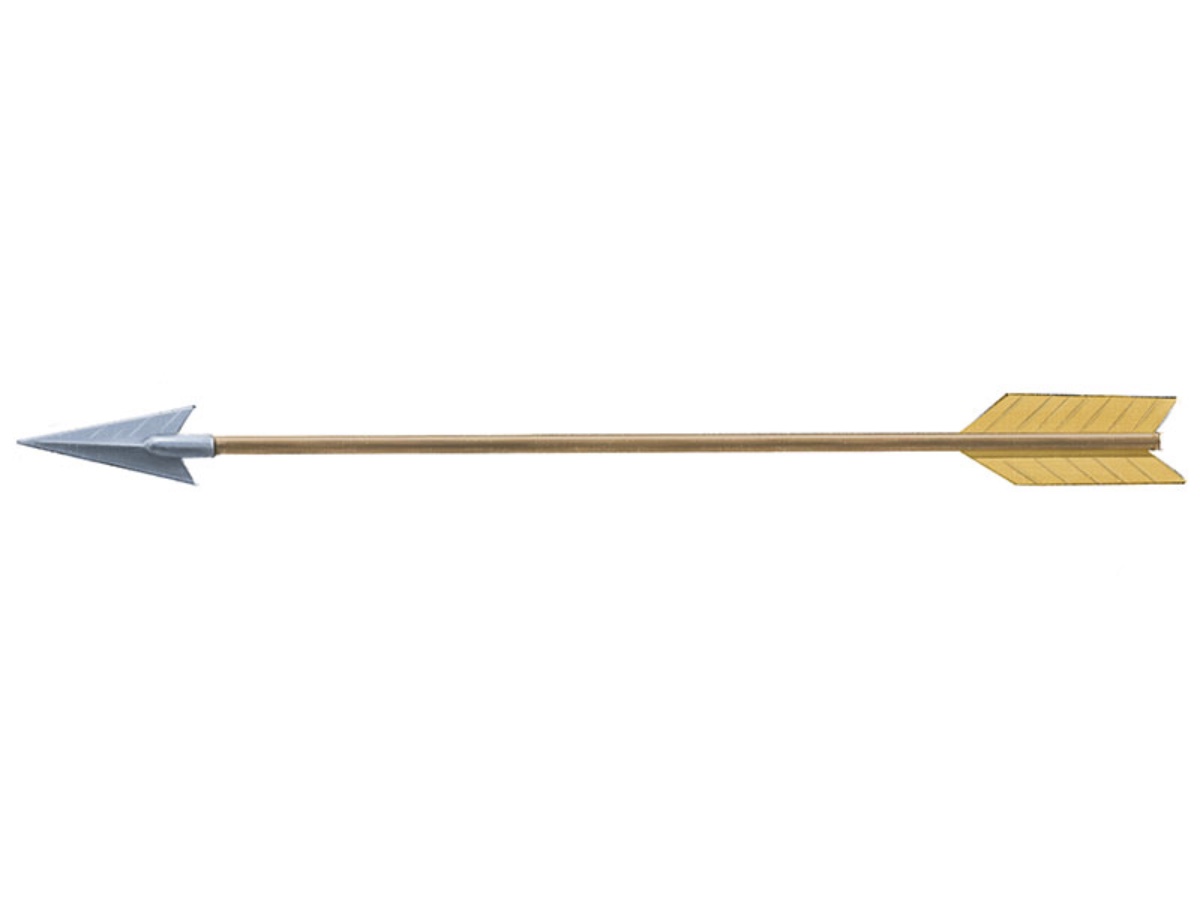
Before starting this tutorial on how to paint an arrow and place the first strokes on the canvas, it’s important to review the key concepts that will help you execute the subject clearly and confidently.
This lesson outlines the techniques and practical considerations needed not only for painting an arrow, but also for working with various simple three-dimensional forms using paint.
We will cover the basics of using light and shadow to create depth and volume. This includes understanding how the position of a light source influences the appearance of a form and how these observations can be applied to build convincing volume.
You’ll learn where the darkest shadows and brightest highlights should be placed to represent the object as accurately as possible on a flat surface.
We will also discuss paint-handling techniques that influence the final look of your work. You’ll see why brush direction matters, how different types of strokes can create a range of textures, and how varying pressure affects saturation and line width. These details play a significant role in giving your image structure and clarity.
Composition is another important element of this lesson. We will look at how the placement of the arrow on the canvas affects the overall perception of the image, and how basic compositional principles can help establish balance and a sense of movement.
How to Paint an Arrow Step by Step
Step 1 – Create an initial arrow sketch
Begin with a rough sketch outlining the arrow’s shaft, tip, and fletching, establishing the overall form and proportions on your canvas or paper. Let us remind you that we have a lesson on drawing an arrow. Use very light lines for this step, because these shapes will be painted over in the next steps. Shape the main parts, trying to achieve a balanced and believable composition.
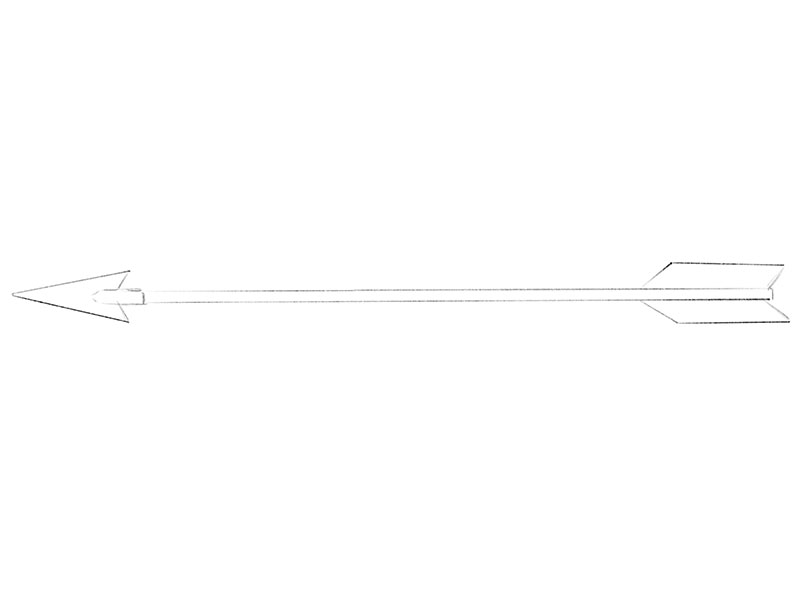
Step 2 – Paint the shaft of the arrow
Lay down an even base layer for the wooden shaft using a mid-tone color. Keep the brushwork consistent and follow the length of the shaft to mimic natural wood grain. Avoid adding details too early; instead, aim for a clean, uniform layer that will support shading and texture added in later steps.
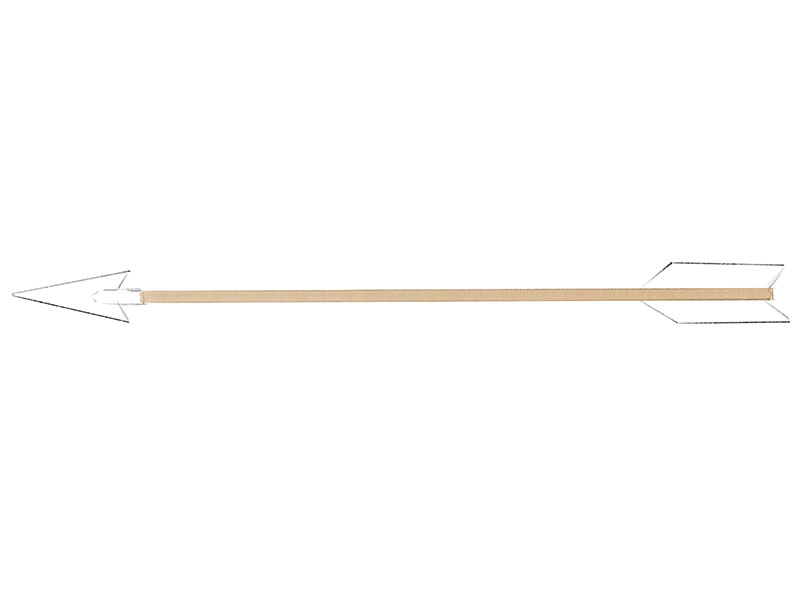
Step 3 – Paint the tip of the arrow
Now, paint in the arrowhead with a cool gray or muted blue tone. Use smooth, deliberate strokes to keep the form crisp. Make sure the edges of the tip remain sharp and relatively straight. You can make some areas slightly lighter to prepare for later highlights.
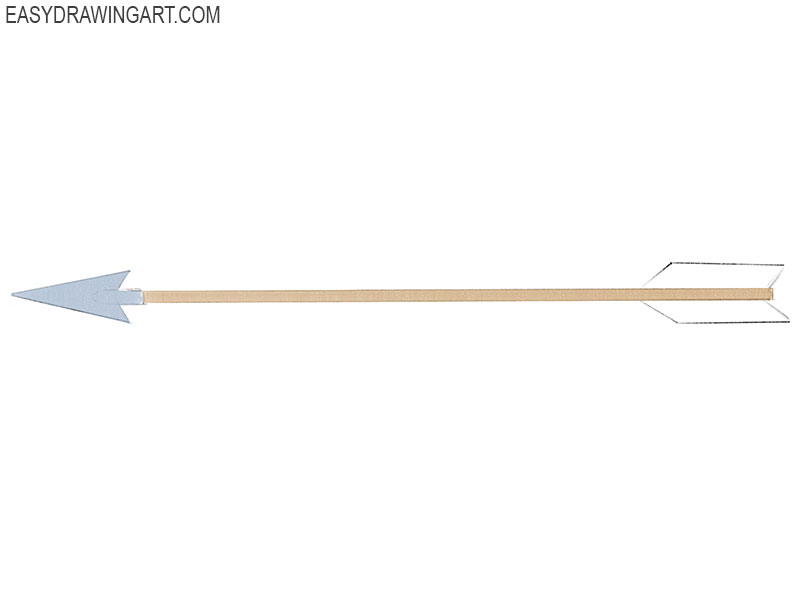
Step 4 – Paint the fletching
Apply a base color to the tail feathers, brushing in the natural direction of the fletching. Use thin, controlled strokes to fill the space without detailing yet. Choose a color that contrasts with the tip. Ensure each section of the arrow stays clean and separated.

Step 5 – Add shadows to the painting
Introduce flat shadows along the side opposite the light source. Use a slightly darker version of your base colors. Shadow placement should match the form: the shaft gets a long, even shadow, while the fletching and tip require smaller, shape-dependent darks.
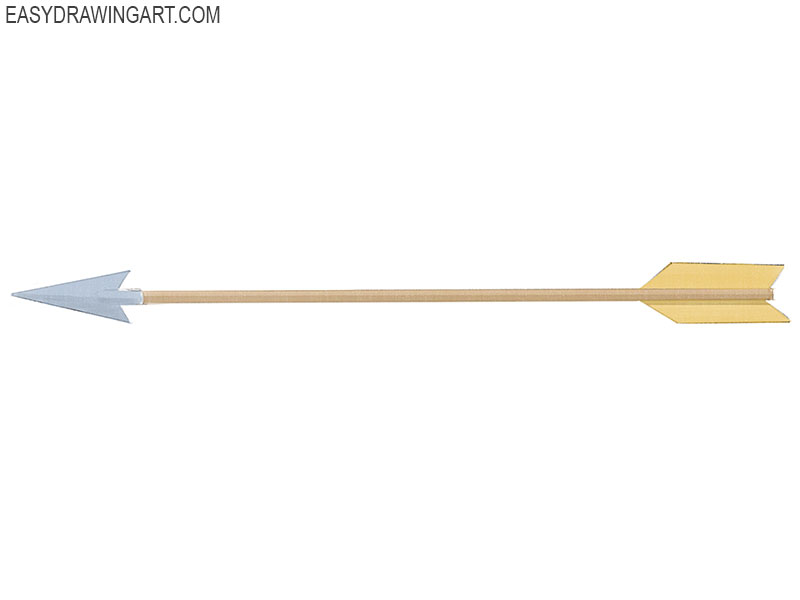
Step 6 – Add highlights and core shadows
Strengthen the three-dimensional look by applying highlights to the top planes and reinforcing the darkest areas away from the light. Core shadows on the shaft and subtle gleams on the metal tip help define the materials accurately.
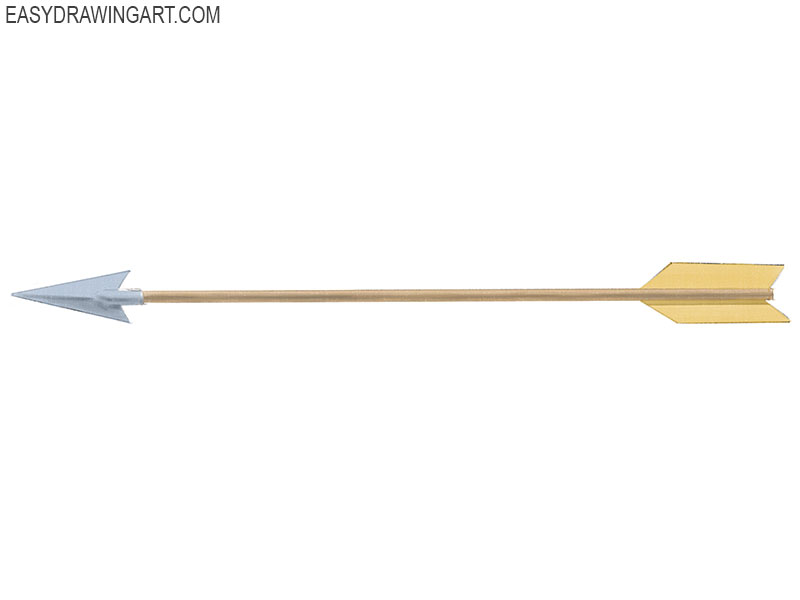
Step 7 – Finishing touches
Refine edges, correct color transitions, and add small texture marks where needed – especially on the feathered tail. Adjust contrast carefully to keep the painting cohesive. A final pass with a soft brush can unify the surface and give the arrow painting a clean, finished appearance.
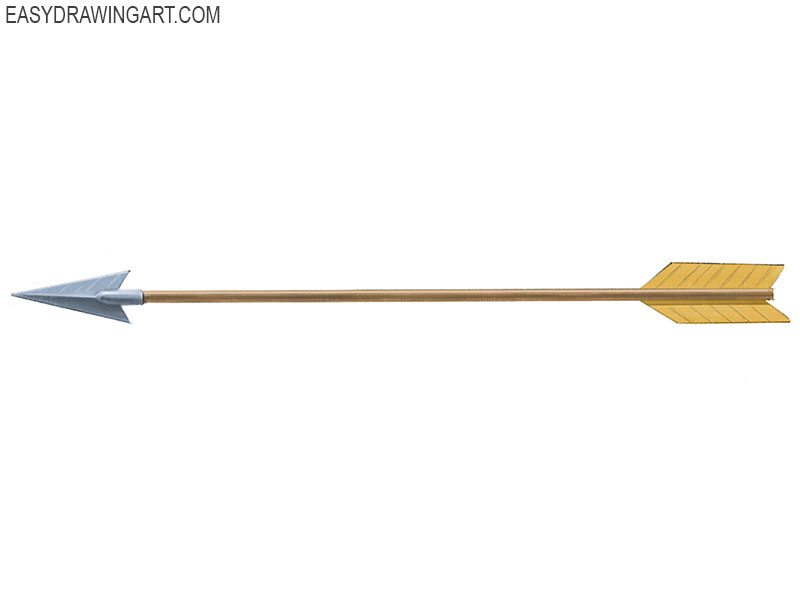
As we conclude this tutorial on how to paint an arrow, it’s useful to return to the key technical points covered throughout the lesson. These ideas form a solid foundation for your continued development in painting.
We reviewed the role of light and shadow in shaping the perception of volume. Understanding how illumination influences form is essential for creating convincing results. This knowledge will support your work as you apply these principles to future pieces.
We also examined how color selection and application contribute to a sense of dimension. Gradients, midtones, and controlled contrasts allow you to create clearer, more defined images. These methods of color modulation are important for strengthening the overall visual impact of a composition.
Another topic was the use of appropriate brushes and stroke techniques. The type, direction, and pressure of a brushstroke can significantly change texture and detail. These choices not only refine the look of your painting but also serve as a way to establish your personal working style.
Finally, we returned to the importance of composition. The arrow you painted serves not only as the subject but as the main element that directs the viewer’s attention.
I hope this arrow painting lesson provides practical guidance for your practice and that the information covered here will support you as you continue developing your skills. Keep working through new subjects, refine your approach, and maintain steady progress in your craft.


